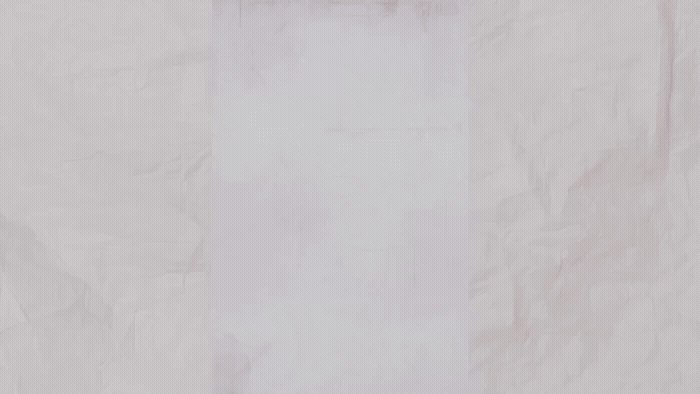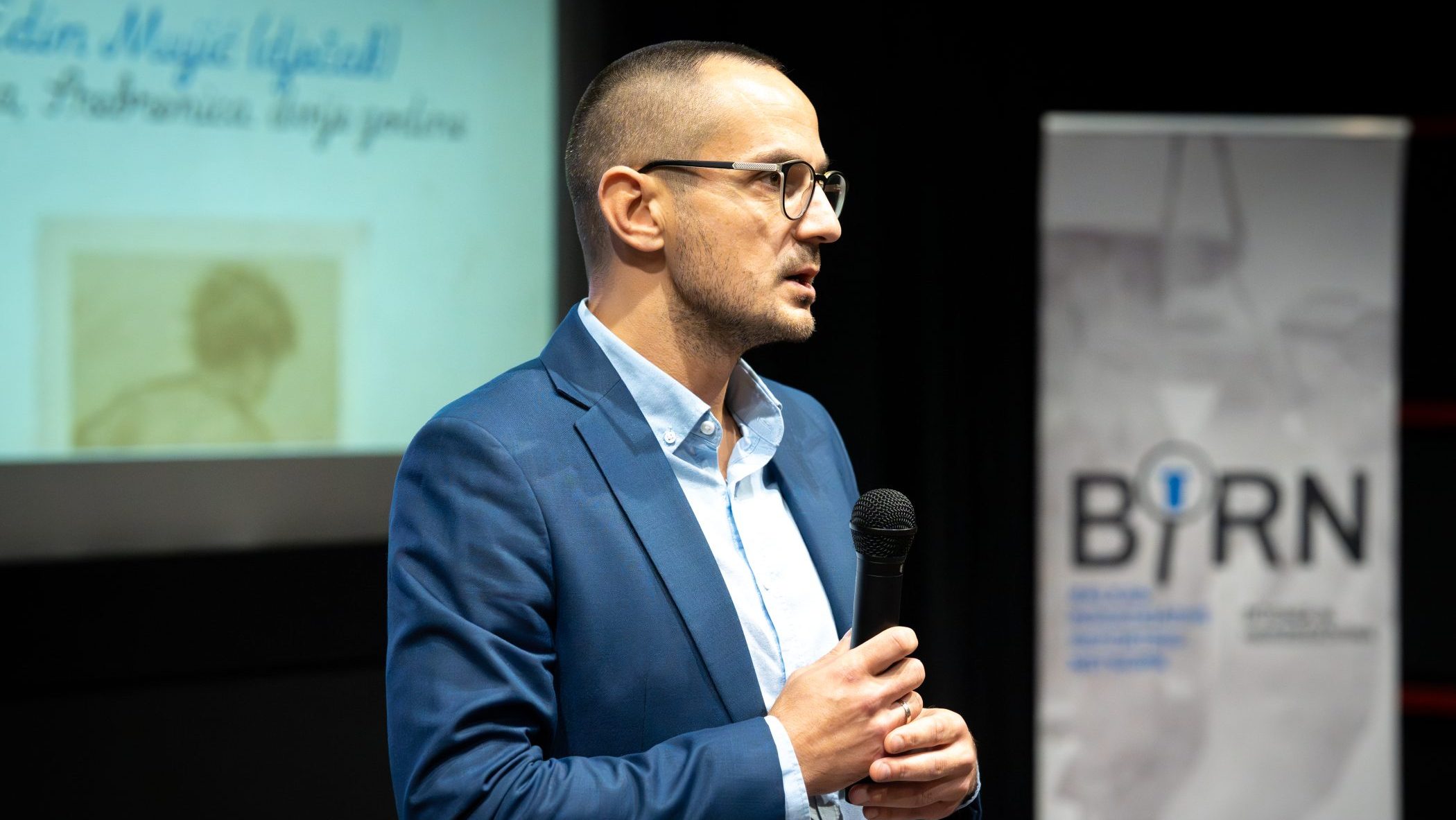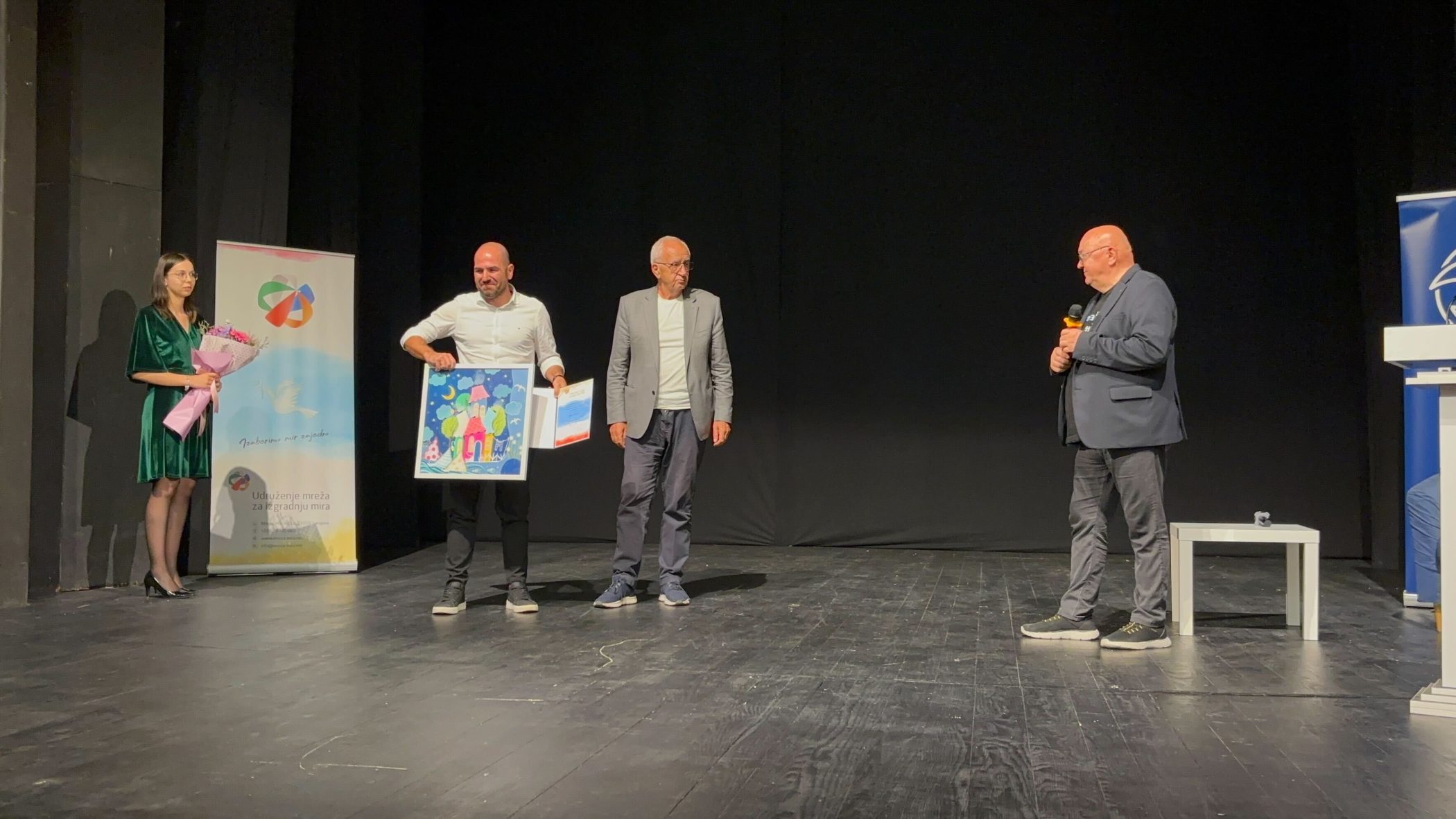This post is also available in: Bosnian
Mitar Vlasenko, Rade Vlasenko and Drago Koncar have been charged with participating in the persecution of the non-Serb civilian population from the Prijedor area from May 24 to mid-August 1992. The indictment alleges that forcible disappearances happened as part of the persecution.
At today’s hearing Drago Koncar confirmed he kept watch with Mitar Vlasenko at a checkpoint next to his father’s house. He said on one occasion three Bosniaks were brought to the area by three soldiers. He said one of the Bosniaks was called Sefik, and he thought his last name was Mahmuljin.
Koncar said Sefik addressed him, asking “Drago, what is this?” Koncar said he responded to Sefik by saying he couldn’t tell him anything.
Koncar said he left the checkpoint later on in order to prepare for the watch, while the captured Bosniaks were taken away by the same soldiers soon afterwards. He heard they were taken to the village of Jaruge and then to detention camps.
Koncar said Bosniaks in Prijedor were given an ultimatum to hand over their weapons and were invited to do so through announcements made by the Prijedor Radio station.
“There was some ultimatum issued to all Bosniak citizens to hand over their weapons, to disarm and they could continue living there,” Koncar said.
Responding to questions from the prosecution, Koncar said he heard the Bosniak population was forced out of their houses when Kozarac was overrun. Bosniak civilians were taken to the Trnopolje detention camp, followed by the Keraterm and Omarska camps.
Mladen Kojic was the second witness to testify at today’s hearing. Kojic said he kept watch with defendant Mitar Vlasenko, next to his father Petar Vlasenko’s house.
Kojic confirmed having seen civilians in Petar Vlasenko’s yard on May 26, 1992.
“They stayed there for a relatively short amount of time. I don’t know when they left,” Kojic said. Responding to the prosecution, Kojic confirmed he saw four Bosniaks were dressed in civilian clothing.
The state prosecution also presented several pieces of material evidence, including a decision issued by the local Srpski Kozarac association on May 10, 1993. Prosecutor Cazim Hasanspahic said the decision proved that the ultimate goal of Serb forces was to ethnically cleanse Kozarac and change its name to Serb Kozarac.
Drago Koncar’s defense objected to the relevance of this evidence, as it referred to events that occurred in 1993. The other defense teams had no objections.
The trial will continue on January 19.


